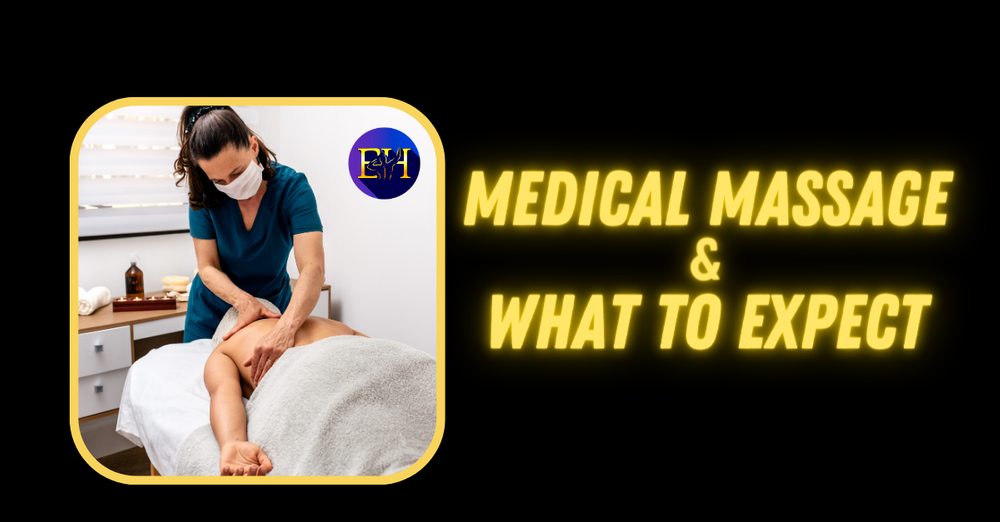
Medical Massage and Physical Therapy: A Winning Combination
- Elite Healers Sports Massage
When it comes to recovering from an injury or managing a chronic pain issue, many people turn to physical therapy to help them regain strength, mobility, and function. While physical therapy can be an effective treatment on its own, research has shown that adding medical massage to the mix can lead to even better results then just doing physical therapy alone.
But why is this the case now and why hasn't it always been this way? Well, in this blog post, we'll explore the various ways in which medical massage can complement physical therapy and enhance the overall effectiveness of treatment.
What is Medical Massage?
Before diving into the specifics of how medical massage can benefit physical therapy, it's important to understand exactly what medical massage is and how it’s different from other forms of massage therapy.
Unlike a traditional "relaxation" massage, which is designed to promote overall relaxation during the massage, medical massage is focused on addressing specific musculoskeletal conditions and injuries. It is often administered by massage therapists who have received specialized training in the field of medical massage, and it can be recommended by a physician or other healthcare provider when appropriate.
Medical massage can include a variety of different techniques, such as deep tissue massage, trigger point therapy, and myofascial release massage, depending on the needs of the individual patient. It is typically administered in a clinical setting, although in some rare cases medical massage therapists may offer mobile services.
Benefits of Medical Massage for Physical Therapy
So, what makes medical massage such a valuable addition to physical therapy? Here are just a few of the ways in which it can enhance the effectiveness of treatment:
-
Reduces muscle spasms and pain: One of the primary goals of physical therapy is to reduce pain and muscle spasms, which can interfere with mobility and function. Medical massage can help to alleviate these issues by releasing muscle tension and promoting relaxation in ways that physical therapy exercise can not assist. Remember an exercise does not always reduce the tension in the muscle and is more likely to promote relaxation in the opposite muscles. So for example, if physical therapy is focused on the biceps, then the triceps muscles will be lengthened as a result of all the focus put on the bicep muscle in this case.
-
Improves range of motion: Many people who undergo physical therapy are working to improve their range of motion, whether it's due to an injury or a chronic condition. Medical massage can help to increase flexibility, while improving mobility and range of motion by stretching and manipulating the muscles and surrounding tissues.
-
Medical Massage enhances muscle recovery time: Physical therapy can be physically demanding, and it's important for the muscles to have time to rest and recover between sessions in order to make progress. Medical massage can aid in the recovery from physical therapy exercises by reducing muscle tension, increasing blood flow and promoting muscle fiber repair, which helps the body to recover faster and more efficiently.
-
Reduces scar tissue: Scar tissue can form as a result of surgery or injury, and it can limit mobility and cause discomfort. Medical massage can help to break down scar tissue and improve its appearance, making it more flexible and less noticeable. In this particular case you will need medical massage to reduce your scar tissue as there is no physical therapy exercise that can reduce scar tissue.
-
Medical massage promotes relaxation of muscles and the mind: Physical therapy & the recovery from sessions can be stressful, both physically and mentally. Medical massage can help to reduce accumulated stress and promote relaxation, which can make the the difference between enjoying those weeks that you are in physical therapy or not. Besides surgery and physical therapy are already very stressful events, so use medical massage to just help make your recovery days more enjoyable.
Conclusion
In conclusion, adding medical massage to physical therapy will lead to better outcomes and faster recovery. By addressing specific musculoskeletal issues, reducing pain and muscle spasms, improving range of motion, enhancing muscle recovery, reducing scar tissue, and promoting relaxation, medical massage can complement physical therapy in a variety of ways.
So schedule that medical massage therapy NYC at our website to get the treatment you need today.
If you're considering physical therapy and are interested in incorporating medical massage, be sure to discuss your options with your therapist or healthcare provider. Together, you can determine the best course of treatment for your needs and goals.
